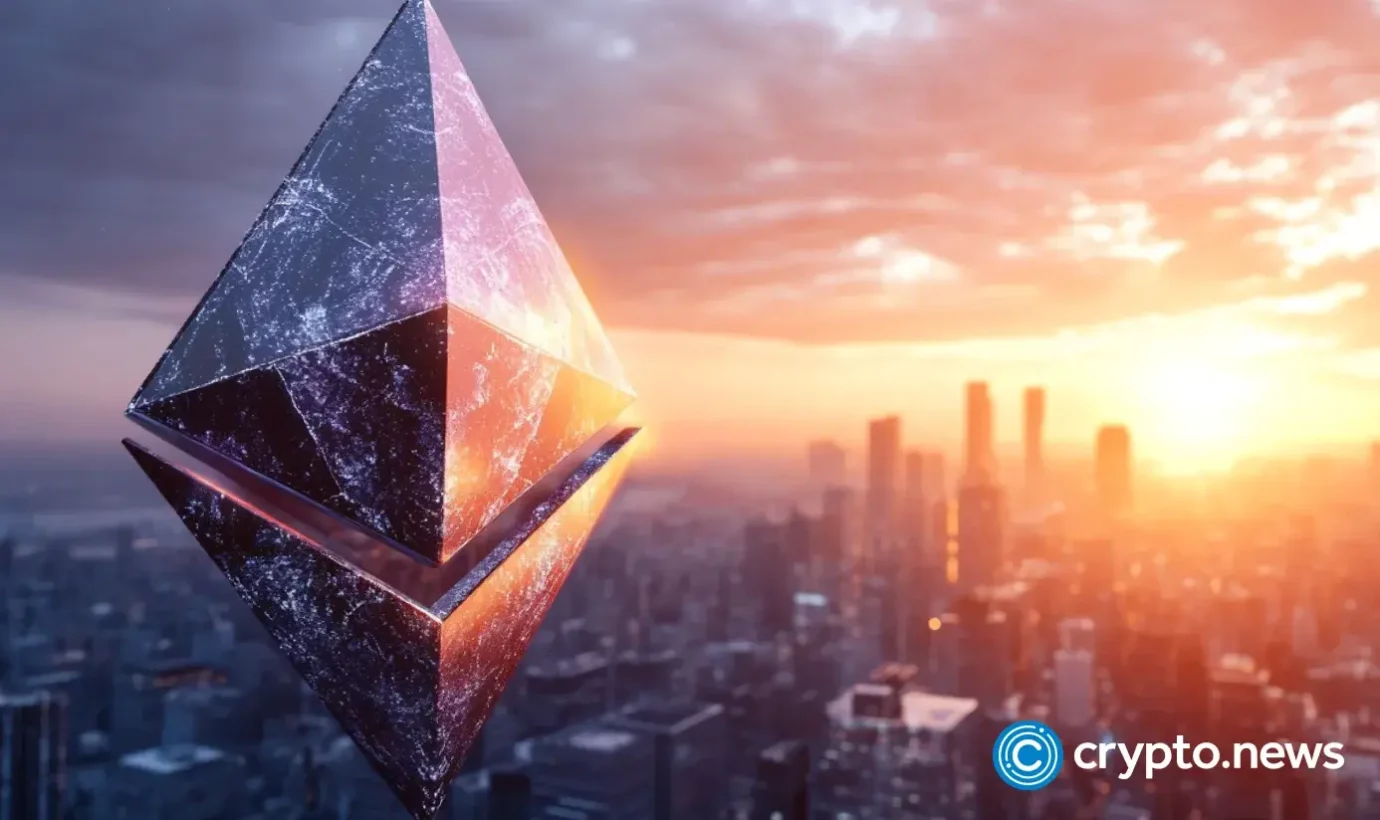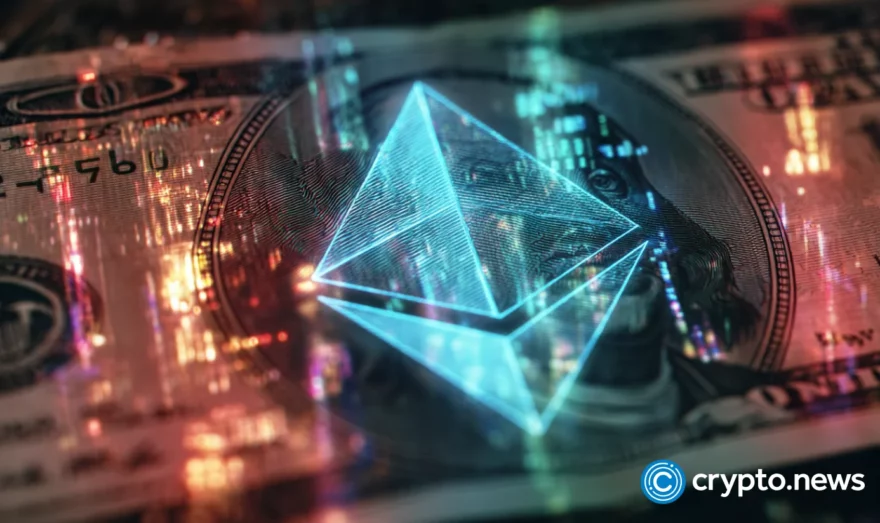The Ethereum paradox: Too big to fail or too slow to matter? | Opinion

Disclosure: The views and opinions expressed here belong solely to the author and do not represent the views and opinions of crypto.news’ editorial.
This “altseason” has been a rollercoaster—great for traders who thrive on chaos but a soul-crushing grind for investors waiting for something, anything, to make sense. Volatility is king, and Ethereum (ETH), the so-called “smart contract leader,” has been looking less like a king and more like a washed-up heavyweight.
From a technical standpoint, ETH’s chart is downright tragic compared to its shinier, younger competitors. Trying to make sense of it is like trying to predict the weather in a tornado—every trader sees something different. Some are clinging to hopium, citing a potential bullish divergence on ETH/BTC’s weekly chart. Others are pointing at golden crosses like they’ve found the Holy Grail. Meanwhile, ETH futures CME’s ascending triangle, which has been poked so many times that it looks like a deflated balloon.
If you’re trading with leverage, consider chilling out. As the old saying goes, “Trade the market, not your delusions”—otherwise, your portfolio will be a historical artefact.
Short- to mid-term outlook: ETH’s revenge pump?
Given the events of the last few weeks, traders have been torn between expecting Ethereum to gear up for an unexpected, face-melting rally—or bracing for yet another brutal fakeout. The market has been throwing mixed signals, making it a playground for both euphoria and despair.
Here’s what’s been fueling the chaos:
- Ethereum ETF inflows have been stacking up, showing that institutional players are quietly accumulating despite broader market hesitations.
- Hedge fund shorts have surged, ramping up aggressively—either as a defensive hedge or a high-stakes bet that ETH still has room to bleed.
The result? Extreme uncertainty. On one side, bulls argue that institutions are setting up the perfect short squeeze, waiting to snap up liquidity and send ETH flying. On the other, bears see a slow-motion train wreck, with traders hedging against potential downside as ETH struggles to reclaim dominance.
One thing remains certain: ETH is still clinging to a multi-year trendline that has survived countless market cycles. If it holds, expect fireworks. If it snaps, the altcoin market might be in for a reckoning.
Long-term: Ethereum’s identity crisis
ETH used to be the altcoin overlord. Now? Not so much. The rise of “Ethereum killers” like Solana has turned the market into a chaotic, gladiator-style brawl for liquidity. But ETH still has one thing institutions love—security. While the degens are chasing faster and cheaper chains, the suits care about one thing: not getting hacked.
And let’s not ignore the wild rumour mill—apparently, Trump has ETH bags? If that’s true, does he know something we don’t? Also, Ethereum’s L2 solutions are massive (though currently about as exciting as watching paint dry).
The most common ETH FUDs—Debunked or confirmed?
1. “ETH is slow and expensive.”
At the time of writing, ETH’s average transaction fee is $1, while Solana (SOL) is flexing with $0.0008. And while Solana boasts 4,770 TPS, Ethereum is crawling at 13.3 TPS. At first glance, ETH looks like an ancient relic, but the reality is more nuanced.
High fees mean demand. If fees were rock-bottom, it would mean no one wants to use ETH. Meanwhile, Solana’s been down more times than a lightweight boxer in a title fight. Ethereum might be pricey, but at least it works.
2. “ETH is too complicated.”
Yes, Ethereum is the nerd of the crypto world, but that’s exactly why it dominates DeFi, stablecoins, NFTs, and DAOs. It’s the playground for innovation. Want to swap, lend, stake, or farm yield without a middleman? Thank Ethereum.
Oh, and let’s not forget: Ethereum has the biggest, baddest developer army out there. Since 2015, ETH has never suffered an outage. Meanwhile, Solana and Sui keep tripping over their own shoelaces.
3. “ETH liquidity is fragmented thanks to L2s.”
Ethereum’s L2 explosion has led to concerns that the mainnet is becoming obsolete. Less on-chain activity means fewer burned fees and more inflation. But here’s the kicker—ETH is playing the long game. L2s aren’t a death sentence; they’re a scaling strategy.
ETH’s underperformance and institutional play
The spot ETH ETFs? So far, they’ve been about as thrilling as waiting for a dial-up connection to load a webpage. (If you remember this pain, you probably also remember Mt. Gox.) Price action has been sluggish, and ETH/BTC has been in a downtrend since September 2022. However, ETFs are macro-driven. When uncertainty hits, BTC is the safety net; ETH and the rest of the altcoins get ghosted.
But here’s why ETH is still a powerhouse—institutions are realizing that decentralization, security, and long-term innovation aren’t just buzzwords. Plus, once spot BTC ETFs rake in billions, some of that cash will rotate into ETH.
And let’s not sleep on the Petra upgrade coming in H1 2025—a potential catalyst for ETH’s long-overdue breakout.
ETH/BTC: The ultimate strength test
Forget the USD price—ETH’s real strength is in its Bitcoin (BTC) pair. And, well… it’s been ugly. ETH/BTC has been bleeding out for almost three years. The one saving grace? A multi-year trend of higher lows—until November 2024, when ETH broke below it. If the number 0.032 BTC instantly rings alarm bells for you, that probably means you’ve been in crypto long enough to have battle scars. If things go south—and let’s be real, they already are—ETH could be staring down 0.017 BTC if the slide continues—a level not seen since 2020. And if that happens, expect an altcoin massacre of biblical proportions.
ETH isn’t just competing with BTC; it’s fighting for its life against Solana, Sui, Aptos, and even its own L2 tokens. Meanwhile, meme coins are luring in gamblers who don’t care about fundamentals—just 100x gains.
How high can ETH go?
Time for some hopium. If we take BTC’s 1.618 Fibonacci extension (which pinned BTC at $102K), the same model puts ETH at $7,300 for 2025. Is this reasonable? Absolutely. Is it guaranteed? Not a chance.
Traders should remember one thing—price targets should be ruthlessly unemotional. As the market evolves, so should your bias. If ETH shows strength, ride the wave. If it breaks down, cut it loose.
Final take: Is ETH still cool?
Right now, ETH isn’t exactly the most popular kid on the playground. It’s not a high-flying meme coin, nor is it a Bitcoin-level safe haven. It’s caught in the middle—too slow for the degen traders, too volatile for the institutions.
That said, ETH still runs the game in security, decentralization, and institutional adoption. If you’re betting on Ethereum long-term, you’re betting on the fact that the crypto industry will prioritize stability over speed.
Short term? Trade carefully. Long term? The king of smart contracts isn’t dead yet.
Disclosure: This article does not represent investment advice. The content and materials featured on this page are for educational purposes only.













